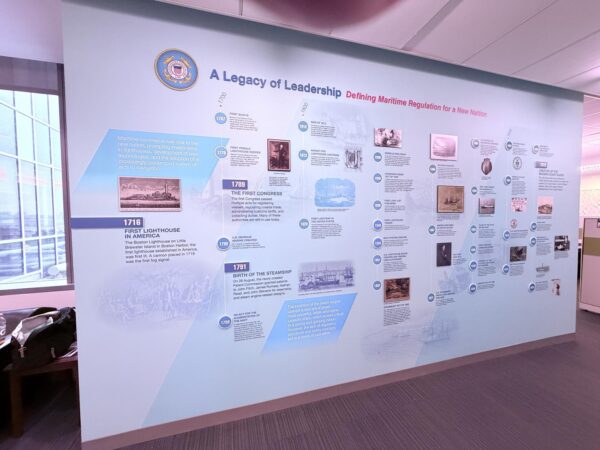
History timeline wall – Acrylic panels on seamless printed wall covering with painted dimensional letters
In classrooms, museums, libraries, and even community centers around the world, history timeline walls serve as powerful visual storytelling tools. These chronological displays offer more than just decoration—they act as educational roadmaps, conversation starters, and windows into our collective past. Whether stretching across a hallway in a school or lining the walls of a cultural institution, timeline walls make history tangible, immersive, and accessible.
What Is a History Timeline Wall?
A history timeline wall is a large-scale visual representation of historical events arranged in chronological order. These walls may cover centuries or focus on specific themes such as civil rights, technological innovation, a nation’s history, or even a single institution’s evolution. Timelines can feature photographs, quotes, artifacts, and multimedia elements that bring moments to life.
They are often customized to reflect the audience and setting. For example:
- In a school, a timeline might align with a curriculum, highlighting major world events or American history.
- In a museum, it may showcase key milestones relevant to an exhibit—such as the history of flight or indigenous cultures.
- In a corporate lobby, the timeline could trace the founding and growth of the company, helping visitors and employees appreciate its legacy.

History timeline wall – Acrylic panels on seamless printed wall covering with painted dimensional letters
Why Timeline Walls Matter
- Visual Learning Aid
Many people are visual learners, and timeline walls provide a memorable way to absorb information. Seeing events laid out spatially helps viewers understand the sequence, cause and effect, and broader historical context.
- Engaging and Inclusive
Rather than relying solely on books or lectures, timeline walls make history more approachable. They can include voices and perspectives often underrepresented in traditional narratives—such as local community contributions, cultural achievements, or minority histories.
- Interactive Storytelling
Modern timeline walls often incorporate technology. Touchscreens, QR codes, or augmented reality features allow users to dive deeper into specific events or watch related videos. This interactivity fosters engagement, especially for younger audiences.
- Institutional Pride and Legacy
For schools, nonprofits, and businesses, timeline walls can reinforce identity and mission. They showcase the progress, struggles, and triumphs of an organization, creating a sense of pride and continuity for all who walk by.
Key Elements of a Compelling Timeline Wall
- Clear Chronological Structure: Easy-to-follow time markers (by year, decade, or era).
- Diverse Media: Photos, maps, artifacts, and artwork add visual interest and emotional resonance.
- Personal Stories: Individual narratives or testimonials breathe life into broader historical facts.
- Design and Accessibility: Thoughtful layout, color schemes, and font choices ensure readability and accessibility for all visitors.
- Interactivity (Optional): Digital integration can offer deeper content and flexibility in storytelling.
Where You’ll Find Them
- Educational Institutions: Elementary schools to universities use timeline walls to reinforce curriculum and celebrate milestones.
- Museums and Historical Societies: Often central to exhibits, helping orient visitors and frame stories.
- Libraries and Archives: Provide context for collections or community history.
- Community Centers and Public Buildings: Celebrate local heritage and shared identity.
- Corporate Offices: Chronicle a company’s development and culture.
Conclusion: Making History Come Alive
History timeline walls transform abstract dates and facts into dynamic, meaningful stories. They remind us that history is not just about the past—it’s about understanding who we are today and where we’re going tomorrow. In a time when education and community engagement are more important than ever, timeline walls serve as bridges between generations, cultures, and ideas—inviting everyone to step into the story.
